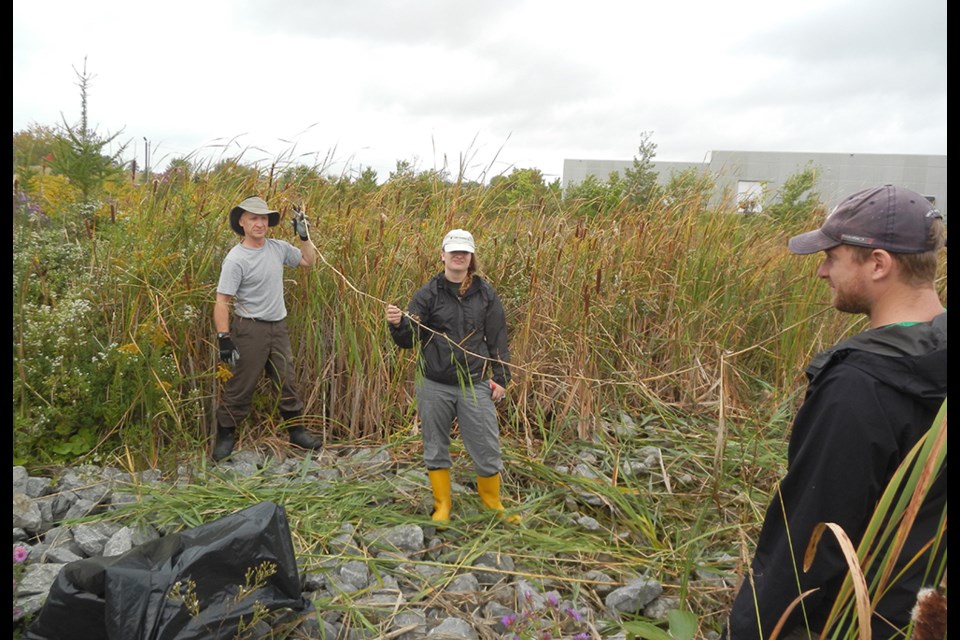There appears to be growing consensus that efforts to control the spread of phragmites australis, also known as the common reed, by non-chemical measures alone just doesn’t work.
Introduced from Eurasia, phragmites forms dense stands which choke out native species, and spread both by seeds (each flowering head can produce up to 2,000) and by its rhizomes, root-like structures that can grow several metres per year.
Even fragments of the roots can generate new plants, making it difficult to control and easily spread.
Phragmites poses a threat to biodiversity, especially in wetlands. It can block drainage and irrigation ditches, choke ponds, compete with crops. The plant, which can grow to a height of nearly five metres, can also block sightlines at intersections, contributing to collisions.
It is the threat to wetlands that has most concerned the South Simcoe Streams Network. Environmental liaison Silvia Pedrazzi has for a number of years organized efforts to control the spread of phragmites by manual cutting.
Crews of volunteers have gone out in late July and August to cut down mature plants before they set seed to reduce the seed load and to weaken the roots before winter.
“The conclusion is that it takes more than manual control to address the phragmites' spread,” Pedrazzi says.
She referred to two specific locations in Bradford West Gwillimbury: one in the Holland Marsh, where the spread of phragmites along newly built berms is a concern, and a stormwater management area in Bradford itself, adjacent to the Bradford Sports Dome on Sideroad 10.
“We were able to keep the phragmites in check at the marsh pilot site, in as much as the patch did not thicken and our interspersed shrubs were not choked out,” Pedrazzi said. “However, at the dome site, despite best efforts, the phrags have gradually taken over from the rushes by the outflow from the storm pond.”
Her conclusion?
“I can say that the spread would have been faster and more intense had we done nothing,” she said, but the effort could not be considered a success.
South Simcoe Streams Network, a branch of Nottawasaga Futures, subsequently applied to the Ministry of the Environment for permission to apply a formulation of the herbicide Roundup to both sites.
“We received approval and the first application was last fall,” Pedrazzi said. “Hopefully, it worked and another application won’t be necessary.”
A similar spraying pilot project in Innisfil, undertaken by the town and the County of Simcoe, found that many of the stands sprayed with the herbicide did not re-generate the following year.
Monitoring is continuing this year, the final year of a three-year pilot.
In Bradford West Gwillimbury, Pedrazzi is waiting for the spring to determine whether the herbicide has controlled phragmites at the dome site and in the marsh.
“I will have a better idea come spring as to its effectiveness and next steps,” she said.

.png;w=120;h=80;mode=crop)

